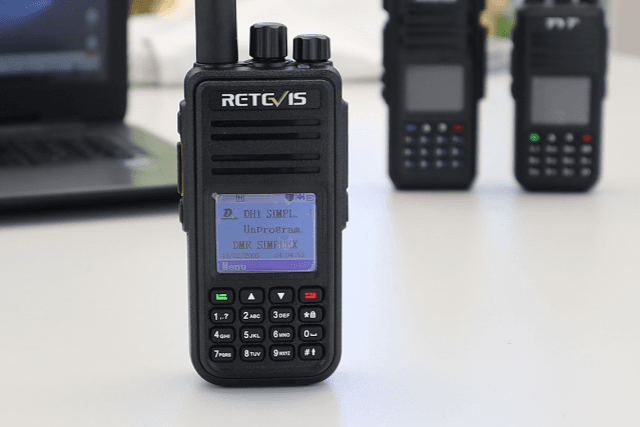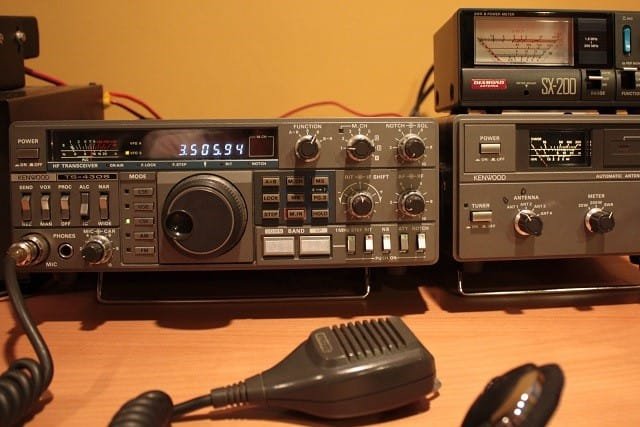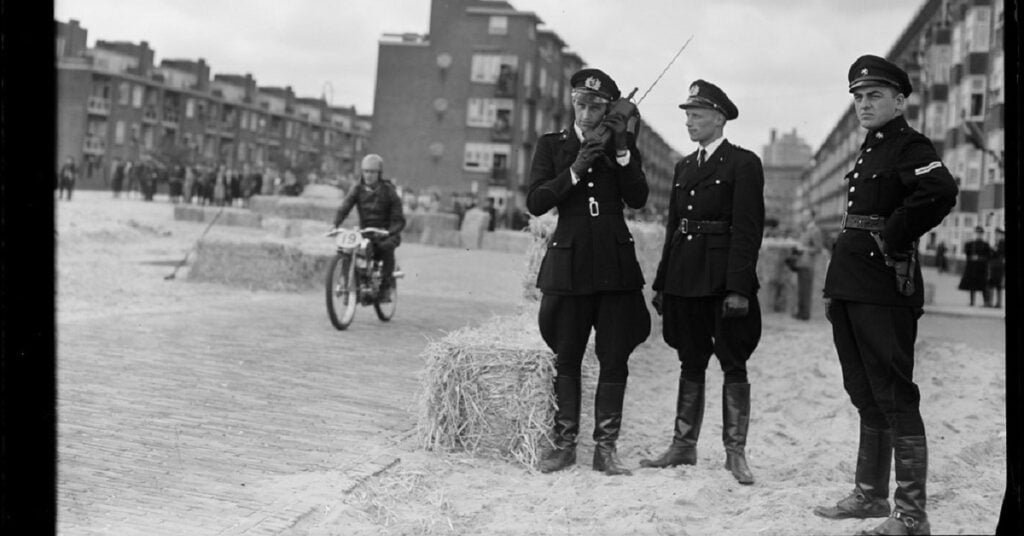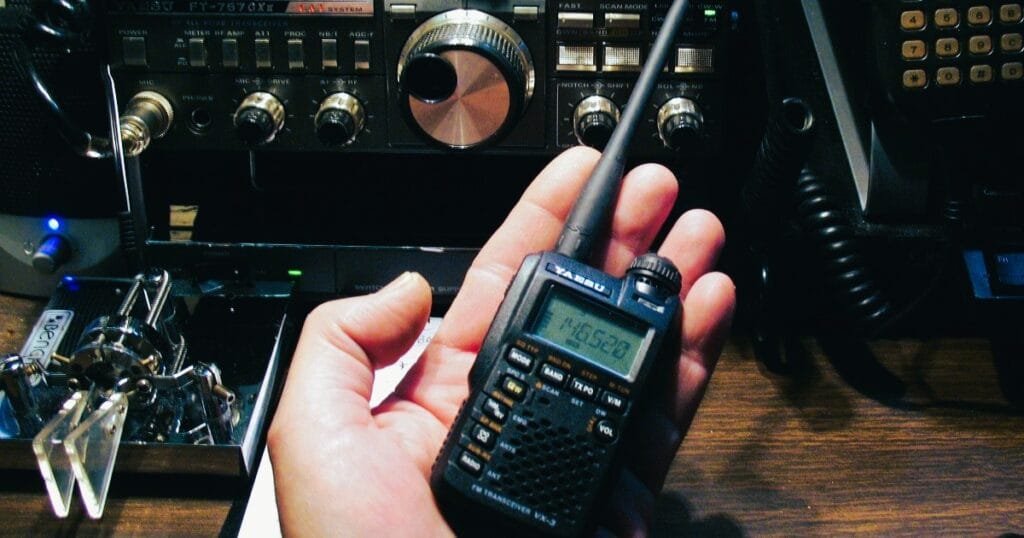Table of Contents
ToggleA Revolutionary Invention in Communication: Walkie-Talkie Radio
There are lots of inventions in communication technology. And walkie-talkies might not be the first thing when you are thinking about invention. But this small but powerful communication technology has made a big territorial impact when we deal with high-stakes or everyday interactions. The walkie-talkie went from being the chaos of battlefields to a soft place during family picnics. Just think of how things used to be — and not so long ago in the grand scheme of history when wireless communication technology did not exist, at all! And then the walkie-talkie, that changed everything. This ham radio review tracks the past and present uses of walkie talkies, emphasizing on how this little thing became a communication giant.
The Spark: The Need for Wireless Communication Technology
World War II, the invention of new modern methods to use in warfare. Communication works mainly by cable telephones, and they were so unreliable that either a shell destroyed them or the thing would become irretrievably tangled up – much like storing earphones in your pocket. In real life-or-death simulations, flags and that type of visual cue was like the most embarrassing game of charades ever. Clearly, a wireless technology that was portable was required.
The walkie-talkie was the answer that would change the history books. This communication technology soon earned its stripes on the battlefield after being designed as a military tool to let soldiers communicate swiftly and effectively. It enabled troops to coordinate more efficiently, decreasing confusion and improving strategic operations. The ability to stay linked without using bulky cables was groundbreaking. It was more than simply a technological advancement; it was a lifeline.
The Inventive Trio: Hings, Gross, and Noble

Let’s now be aware to give credit to those who genuinely deserve it. The walkie-talkie did not simply materialize out of thin air. It was the idea of three inventors: Donald L. Hings, Alfred J. Gross, and Dan Noble. Each contributed a piece of the jigsaw that led to the development of the walkie-talkie we know today.
The earliest portable communication devices were created for mining enterprises by Canadian inventor Donald L. Hings. During World War II, the Canadian government became interested in his idea because of its possible military application. Hings’ early versions were only the start of the walkie-talkie revolution.
Meanwhile, on the U.S. side of the border, American engineer Alfred J. Gross was also conducting research with two-way radio communication technology. He created a smaller, more complex gadget that got the catchy term “walkie-talkie.” Then there was Dan Noble, who took things to the next level while working at Galvin Manufacturing Corporation (now Motorola). Noble created the SCR-300, a backpack-mounted radio with a 20-mile range. This portable communication device proved a valuable asset on the battlefield, allowing soldiers to communicate across great distances, even in chaotic settings.
For anyone interested about how these early versions compare to modern technology, a simple radio review will demonstrate how far we’ve come from the wartime walkie-talkie to today’s digital gadgets. The contrast highlights the huge advances in communication technology while simultaneously demonstrating the eternal nature of the original notion.
From the Trenches to Civilians: The Walkie-Talkie’s Transformation

When the war ended, walkie-talkies did not just retire to military museums. They developed and adapted to civilian life, becoming an essential tool in a wide range of areas. The first attempt to make a smaller and user-friendly handy wireless communication device was the SCR-536 which is also known as “handy-talkie”. Over time many other companies and personal research have developed it into smaller and lighter versions which are also cheaper.
Handheld radios as communication technology was highly in use by the 1950s to 1960 The technology has become something we, the public, can use. A device that was offered to soldiers on the front line now could be available for children playing in their backyards or used by construction workers planning a job site. These were quickly adopted by various industries.
Public safety professionals, such as police officers and firefighters, immediately recognized them as necessary instruments. These specialists were no longer bound by cables, allowing them to communicate swiftly and efficiently amid an emergency. Walkie-talkies were essential for organizing rescues, controlling crises, and maintaining public safety in crucial situations. Are you curious about what type of walkie-talkies police use? Read here.
And it wasn’t simply emergency personnel that profited. Event managers, security staff, and even families on road vacations have discovered useful applications for this handy tool. Walkie-talkies became the preferred technology for remaining linked in real time without the inconvenience of bad reception or dead batteries, which plagued other communication tools.
The Communication Technology in the Modern World

All the way up until now when walkie-talkies are more advanced than they ever have been. Today, versions of walkie-talkies come with digital encryption (ensuring secure voice communications), GPS tracking and multiple channel choices. These devices are not confined to police enforcement and military use anymore; they have opened up a wide range of doors for many other people. From coordinating a security team to finding lost kids in an amusement park or prepping for some massive event, there is a walkie talkie suited to your needs.
The smartphone has arrived, yet the trusty old walkie-talkie endures as they are a favorite for many people. They are independent of cell towers and Wi-Fi, which makes them very useful in remote areas or when other modes of communication might not work. Rather oddly, walkie-talkies can often be more convenient and dependable even than your smartphone under sectioned circumstances: whether you are hiking in the great outdoors or wandering around a confusing convention center.
If you are new to radio terminology, a review of the radios will help you identify which is right for your use. Current walkie-talkies are developed to hold up against harsh settings and weather variability. Both the latest models are rugged, waterproof and seemingly have long-lasting battery lives as well.
Looking for a good walkie-talkie with dual-band at an affordable price? Read this one.
What To Choose: Walkie-Talkie Radio Or Smartphone
In the modern world you can ask why we still need walkie-talkies and old fashioned radio communication devices where we already have advanced and updated technology like smartphones. I mean, your phone can nearly do it all anyway? Well, that’s the point: Walkie-talkies thrive where smartphones can’t. In harsh weather conditions, loss of power or a place with low mobile phone coverage; you can rely on your walkie-talkies to help communicate. You won’t have to worry about data restrictions, patches of no service or updates not being able to go through in emergencies.
Deploying broadcasts and receiving returns are also faster on walkie-talkies, but what you say can be heard by others. Think of yourself walking into a very secluded wild area in the middle nowhere with no mobile service. This walkie-talkie helps you stay connected to your group even though you are far away from them. For instance, a busy construction site where everyone wants the convenience of keeping in touch without having to locate their phone. In scenarios like these, walkie-talkies really shine as they enable instant communication at the press of a button.
Walkie-talkies are also built to be tough. Many newer models are even designed to withstand drops, dust, and water! New cellphones come more delicate each time, but walkie talkies are tough. A brief look reveals that walkie-talkies are convenient, and last forever!
Curious about the distinction between a walkie-talkie and an AM/FM radio? Read the details here.
Walkie-Talkie Advancements in Communication Technology

One intriguing element of walkie-talkie technology is how it has evolved to accommodate the needs of different sectors. Initially, the focus was on range and mobility. Today’s walkie-talkies provide previously imagined functionality. For example, many models now have digital encryption, which guarantees that conversations are secret and secure—an important feature for law enforcement and security personnel.
GPS tracking is another current feature that allows users to keep track of each other’s positions. This capability is extremely useful in search and rescue efforts or large-scale events, when knowing team members’ specific whereabouts might make all the difference. These advances illustrate the continued progress of walkie-talkies from simple two-way radios to complex communication tools.
A complete ham radio review of the latest versions will confirm additional benefits such as extended battery life, noise-cancellation technology and accessory compatibility. Whether you need an industrial-strength walkie-talkie or a fun little one, the market is flooded with options for every use case today.
Final Thoughts: The Impact of the Walkie-Talkie
While the walkie-talkie was initially developed because of a military necessity, it seems as if they are much more today. And that little invention by, say Hings; Gross and Noble as we called it has helped millions of people across battlefields to construction sites -even camping excursions. This has reduced the work of information transmission in a variety, as well as improved its reliability and speed.
So the next time you spot someone using a walkie-talkie give that unsung hero of communication technology a nod. Whether you are out in nature, or planning a busy event — the walkie-talkie will make sure that your link is never lost. Keep in mind, that if you prefer to pick the most effective design for your needs, a quick ham radio testimonial might assist. After all, even the simplest invention could make a great difference in our lives.


